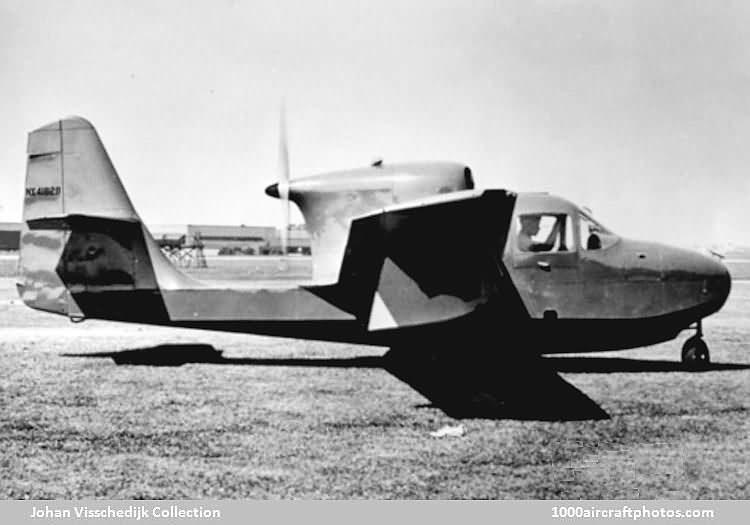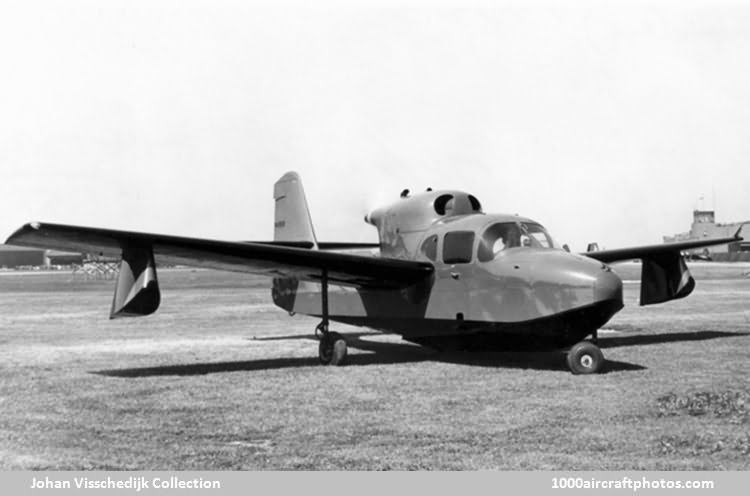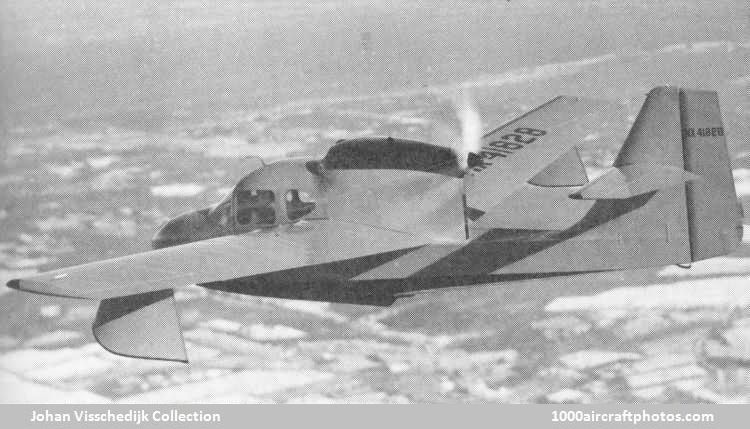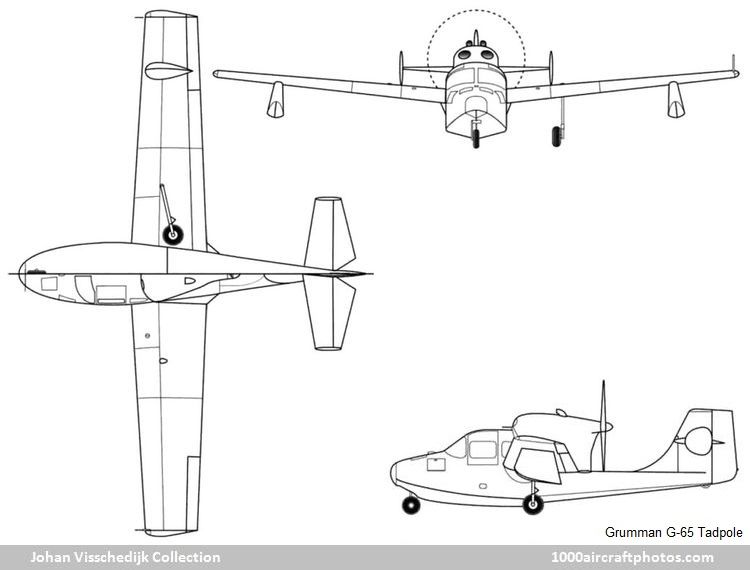JOHAN VISSCHEDIJK COLLECTION
No. 12042. Grumman G-65 Tadpole (NX41828)
Photographs from Grumman, taken September 18, 1946
07/31/2013. Remarks by
Johan Visschedijk: "During March 1945 Grumman set an all-time, all-nation record by producing 664 military planes. At the time there were 22,100 people on the payroll, and the production lines were turning out Hellcats, Tigercats, Bearcats, and limited quantities of the two amphibians, the Goose and the Widgeon. Some of the Widgeons, with modified hull lines, were now being produced for high-priority commercial customers. And in Plant Number 4, the assembly hangar, there was a prototype of another airplane, the Tadpole. A special project dear to the hearts of those two flying sailors, Leroy 'Roy' Randle Grumman (company founder) and Franklin 'Hank' T. Kurt (test pilot), this aircraft was for the private-flier market, an alien world to Grumman.

The Tadpole was a two-seat (with a jump seat for a second passenger) amphibian of spot-weld metal construction. It was a high-wing, pusher-type monoplane with an 125 hp Continental C125 Series 3 engine set in the wing and it had a retractable tricycle landing gear. The Tadpole, with its squared-off wing tips and tail surfaces, bore some resemblance to the larger Widgeon. The Tadpole was first flown by Hank and Roy on December 7, 1944. With a loaded weight of 2,100 lb (953 kg) carrying the pilot and one passenger, fuel, baggage, and anchor, the amphibian's performance was satisfactory and in some respects it was superior to other light planes of the period.

However, it was never put into production, there were a number of reasons for abandoning the project. For one thing, the expansion of the postwar private-flier market never reached the proportions that had been anticipated. Returning service-men with accumulated pay seemed more interested in putting their money in a mortgage than they were in getting airborne, and those who were interested in the light plane market found there were plenty of war surplus small trainers available. Furthermore, lacking a sales organization and without experience in selling to the private-flier market, Grumman would have found the going very rough indeed.

Grumman also found that it would be overpriced in the light plane market, as competitive small planes selling price was sometimes considerably less than the actual building costs. This strategy was sometimes employed in the hope of building up a volume production, like Republic Aviation did with a somewhat comparable amphibian, the RC-3 Seabee. Since no one in Grumman could see any sense in building airplanes in order to lose money, the Tadpole project was dropped and the plane disassembled.
In one sense, however, the Tadpole did survive. Dave B. Thurston, an engineer on the project, subsequently took the Tadpole concept to a small company in Maine, where in 1948 a development was flown as the Colonial C-1 Skimmer. Since over 1,000 descendants have been produced by Colonial, Lake, and Thurston."
Created July 31, 2013





